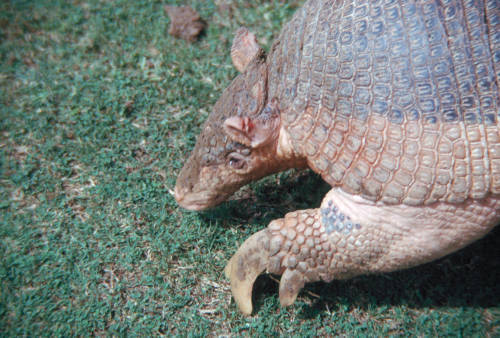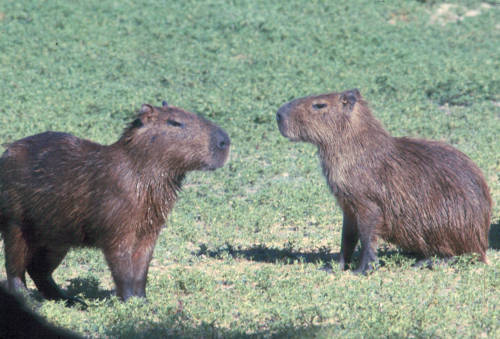#warren and genevieve garst
Text

Black-tailed prairie dog sitting in grass
CSU - Garst (Warren and Genevieve) Collection
Colorado State University, Mountain Scholar
#prairie dogs#black-tailed prairie dogs#colorado state university#warren and genevieve garst#garst collection#mountain scholar#tongue out tuesday#crap - it's wednesday
17 notes
·
View notes
Text

Three marabou storks walking in shallow water
CSU - Garst (Warren and Genevieve) Collection
Mountain Scholar Digital Collections
4 notes
·
View notes
Text

Square-lipped rhinoceros standing close up, Southeastern Africa, ca. 1958-1988
Garst, Warren, 1922-2016, photographer
CSU - Garst (Warren and Genevieve) Collection
Mountain Scholar, Digital Collections of Colorado
#rhinoceros#square-lipped rhinoceros#southeastern africa#mountain scholar#digital collections of colorado#warren and genevieve garst#colorado state university
2 notes
·
View notes
Text

Giant armadillo walking on grass close up, 1965
CSU - Garst (Warren and Genevieve) Collection
Mountain Scholar
#armadillos#giant armadillos#warren and genevieve garst collection#mountain scholar#colorado state university#photographs
2 notes
·
View notes
Text

Alpaca standing at Machu Picchu, ca. 1973
35 mm slide; color. Scientific Classification: Kingdom: Animalia; Phylum: Chordata; Class: Mammalia; Order: Artiodactyla; Family: Camelidae; Genus: Lama; Genus species: Lama pacos. Animal characteristics: Head-Body Length: 120-225 cm; Height: 94-104 cm; Weight: 55-65 kg; Identification: Alpacas are either uniformly colored or multicolored with white, brown, gray, and/or black hair; Habitat: Alpine grasslands, meadows, marshes; Reproduction: These seasonal breeders are also induced ovulators. They mate lying down, usually within two weeks of giving birth to a single offspring. Gestation lasts 342-345 days; Social Structure: Because all of the current populations of alpacas have been domesticated, their social organization is unknown; Status: No special status; Interesting Facts: There are two known breeds of alpaca that are often used as a source of wool and meat or for pack animals.
CSU - Garst (Warren and Genevieve) Collection
Mountain Scholar - Digital Collections of Colorado
5 notes
·
View notes
Text

Common wombat standing near burrow
Garst, Warren, 1922-2016, photographer
35 mm slide; color. Scientific Classification: Kingdom: Animalia; Phylum: Chordata; Class: Mammalia; Order: Marsupialia; Family: Vombatidae; Genus: Vombatus; Genus species: Vombatus ursinus. Animal characteristics: Head-Body Length: 90-115 cm; Height: 36 cm; Weight: 22-39 kg; Identification: The wombat has coarse, brown or gray fur and a bare muzzle; Habitat: Temperate forests, heaths, mountains; Diet: Herbivore: grasses; Reproduction: Young wombats can be born any time of the year. They stay in their mother's pouch for 6-7 months and nurse until they are 15 months old; Social Structure: Common wombats will often form stable social relationships with minimal close-quarter contact to minimize aggression; Behavior: Being nocturnal, wombats spend days in underground burrows; Status: No special status; Interesting Facts: The closest relative to the wombat is the koala.
CSU - Garst (Warren and Genevieve) Collection
Mountain Scholar Digital Collections of Colorado
#wombats#common wombats#exceptional wombats in my book#mountain scholar digital collections of colorado#warren garst
32 notes
·
View notes
Text

Western spotted skunk lying against rock near cactus, ca. 1965
35 mm slide; color. Scientific Classification: Kingdom: Animalia; Phylum: Chordata; Class: Mammalia; Order: Carnivora; Family: Mustelidae; Genus: Spilogale; Genus species: Spilogale gracilis. Animal characteristics: Head-Body Length: 23-34 cm; Identification: The Western spotted skunk is mostly black with variable white spots and stripes on its body; Habitat: Wastelands, brush, wooded areas; Diet: Omnivore: rodents, birds, eggs, insects, fruit; Reproduction: While mating occurs only during the late summer, females give birth either year-round or only in the spring depending on their location. Implantation of the fertilized eggs is delayed, followed by a four-month gestation period. On average, 4-5 young are born at a time; Social Structure: The skunk, as a general rule, is not a social animal; but the spotted skunk is more social than other skunks, and it will share dens in the winter; Behavior: Spotted skunks are nocturnal. Although they are mainly terrestrial, they will sometimes take shelter in trees. If threatened, a skunk will stamp its front feet, raise its tail, and walk with stiff legs. It will then spray a foul-smelling substance, aiming for the attacker's face; Status: No special status; Interesting Facts: A skunk's spray can cause intense irritation of the eyes and temporary blindness. Their aim is accurate up to 2 meters. Rabies is commonly carried by skunks in the United States.
CSU - Garst (Warren and Genevieve) Collection
Colorado State University digital collections
9 notes
·
View notes
Text

Two capybaras standing in grass
35 mm slide; color. Scientific Classification: Kingdom: Animalia; Phylum: Chordata; Class: Mammalia; Order: Rodentia; Family: Hydrochoeridae; Genus: Hydrochoerus; Genus species: Hydrochoerus hydrochaeris. Animal characteristics: Head-Body Length: 1-1.3 m; Height: 50-62 cm; Weight: 35-66 kg; Identification: The capybara has light brown coloration, long bristle-like hairs, no tail, and partial webbing between its toes; Habitat: Forests, open grasslands; Diet: Herbivore: aquatic plants, grasses; Reproduction: Mating is done in the spring. Gestation takes 15-18 weeks and females can give birth to up to seven young at a time. Females will suckle any young within their family group. The young can eat grass within a week after birth. Life expectancy for capybaras is 5-10 years; Social Structure: Family groups change by the season. During the wet season, 10-40 capybaras may belong to a single group. These groups usually have one dominant male, 1+ females, several young, and 1+ subordinate males. When conditions are more dry, up to 100 animals will gather together; Behavior: Much of the capybara's time is spent in the water; Status: No special status; Interesting Facts: Capybaras, the largest living rodents, are excellent swimmers and divers.
CSU - Garst (Warren and Genevieve) Collection
Mountain Scholar - Digital Collections of Colorado
3 notes
·
View notes